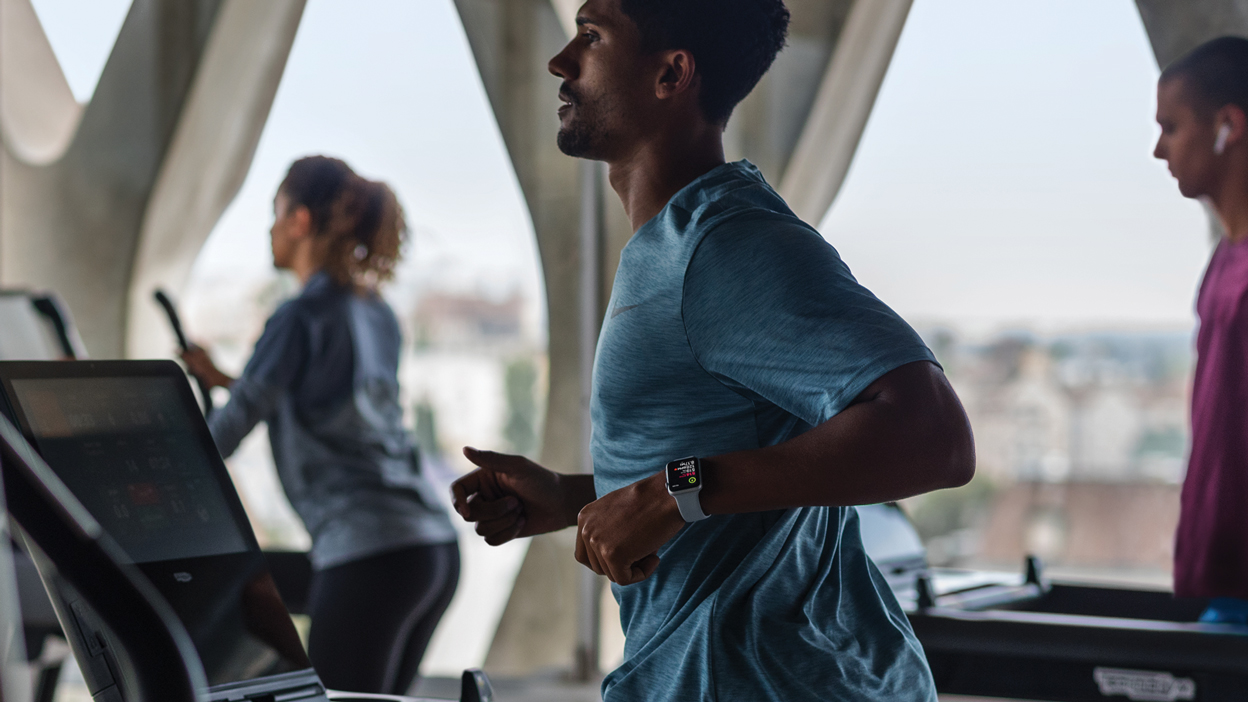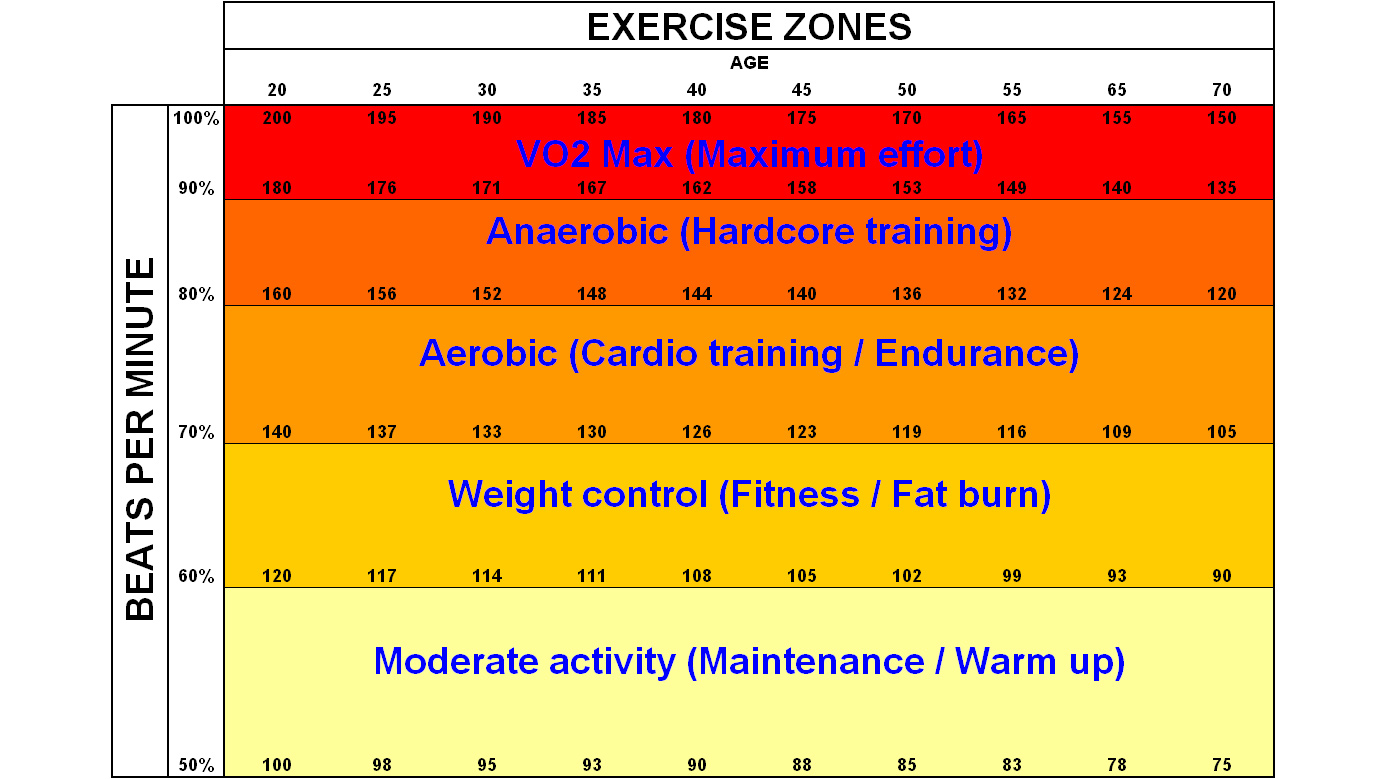4 basic tips from a personal trainer to make the most of your fitness tech
Squeeze every little bit of value out of that device on your wrist

Fitness trackers are remarkable things, allowing you an insight into how your body works, and helping you to achieve your fitness goal, whether that’s weight loss, muscle gain, increased stamina, or training for an event.
The problem is, fitness trackers only really tell you what you’re doing, not what you should be doing, so you’re left doing your normal routine, just a little better informed.
In this piece I’m going to be taking my journalist hat off (well, half-off, I still have to write the thing), putting my personal trainer hat on, and letting you know some simple tricks for getting the best results using your fitness tracker.
I have to say here, as with any training it’s important that you consult a physician before starting, and exercise is performed entirely at your own risk. Want to make a real difference to how you look and feel in 2019? Keep reading.
1) Know your metrics
This is a really simple one, but one that many people miss. While knowing your heart rate (for example) is interesting, it’s not that valuable. Not unless you know your metrics that it shows. First things first, let’s talk about heart rate zones.

As you can see in the image above, your heart rate is a solid indicator of what affect the exercise you’re doing is having on your body. Now, one of the things that is most counter intuitive is the heart rate zone for fat loss.
You’ll see that it’s around 100bpm, which if you’ve ever actually looked at your fitness tracker will look like a typo because it’s a seriously low level of exertion. The science behind this is that the energy system used at this low level of energy is the one that uses your fat stores as energy, so if you’re aiming for fat loss, you might be over-working and not seeing the results you want.
Sign up for breaking news, reviews, opinion, top tech deals, and more.
Obviously, working at a lower level will have a smaller energy cost so you’ll need to do a greater amount of low-level exercise but you’re better off going for regular, long brisk walks than you are killing yourself on a treadmill three times a week.
EPOC interval training
If you don’t have the time, you could always try the EPOC route. EPOC stands for excessive post-exercise oxygen consumption, and is basically the principle that when you work anaerobically (without oxygen. It’s referring to the energy system. Check the graph above again) you create an oxygen deficit that your body then has to recoup once you’ve finished exercising.
Due to the nature of anaerobic exercise, you can only sustain it for very short bursts, and so to really activate EPOC in a meaningful way, you need to do interval training. High intensity interval training (HIIT) is a very popular method of training that is applying this principle.

In it, you do short bursts of an activity at maximal (or just sub-max) effort that ramps your heart rate right up, then a period of low intensity where you recover enough to do another maximal period. Then repeat. Something that is easy to maintain and is unlikely to injure you is best, like a static bike.
It’s very easy with this training method to not train maximally, and not return down to a low enough heart rate during your rest periods. Use your heart rate tracker. Also, you shouldn’t ever stop moving completely if your heart rate is above 120bpm.
Your heart is very good at pumping blood down your body, but it needs help from your legs to pump it back up again. If your heart is going over 120bpm and your legs aren’t moving your brain is going to drain pretty swiftly and you’ll feel dizzy and nauseous. Warm down, and up. There’s a good scientific reason for both.
Weight loss vs fat loss
Also, you’ll notice that I use the term ‘fat loss’ rather than ‘weight loss’. There’s a good reason for this. You can gain weight and be getting smaller. There is a common thing that happens among people with weight loss goals that they are worried building muscle will make them look big or bulky.
The truth is, putting on enough muscle to look big and bulky is hard. There’s a reason steroids exist. If you’re looking to trim down, building your muscles will help your body to burn more calories at rest, helping you maintain a low body fat percentage while eating like a human being.

Rather than measuring your weight, I’d suggest measuring your body fat percentage. You can do this using bioelectrical impedance scales if you’d rather not have a personal trainer squeeze your lumpy bits with callipers. It won’t be as accurate, but it will be cheaper and less invasive.
If neither of those sound appealing I’d recommend using body measurements. All you need is a tape-measure and half an hour and you’ll have readings that are a better indication of your look than a scale. There are a few variables here, so we’d recommend this very clear guide from Fitstream to get started.
- Your guide to the best smart scales
2) Use the stopwatch
I know, I know, this one’s even more obvious than the last, but if I had a dollar for every time I’ve walked past someone at the gym sitting on a resistance machine or with free weights with no measurement of time between sets, I’d probably be the richest man alive.
Your muscles need recovery in order to work at their best, and actually gain results. This doesn’t just relate to rest between training sessions, but also rest between sets. As a general rule of thumb if you’re doing strength training (fatigue after one to six reps) you need between three and five minutes between sets.

For muscle growth (six to twelve reps) you’re looking at one and a half to two minutes, and for endurance training (fifteen to twenty reps) you’re looking at between 45 seconds and two minutes depending on what you’re doing.
I guarantee if you’re not timing your rest between sets you’re going to be shocked how long you sit doing nothing. You’re going to get some funny looks at the gym, but trust me, they’re the ones doing it wrong.
3) Measure your macros
I don’t know a single person who is totally ‘shredded’ that doesn’t measure their macros. To put it another way, I also don’t know a single person who measures their macros who’s made no progress with fat loss.
‘Macros’ is an abbreviation of macronutrients, and yes, this is a nutritional thing. There are a lot of sayings that get chucked around in the gym, but ‘it’s 80% what you put in, and 20% how you work out’ is one of the truest.
Macronutrients are the subcategories that your food can be broken down into. These are fat, protein, and carbohydrate. The quantity of food that you eat is important, but equally important is the ratio of macronutrients.
In the western world we have got to a point where we eat a massively disproportionate amount of carbohydrate. Partly this is because of the ‘fat makes you fat’ movement that just refuses to go away, partly it’s because pasta is delicious.

Now we’re in danger of the pendulum swinging the other way, and we’re seeing a lot of people claiming that carbs are the enemy. What’s actually closer to the truth is that you should be eating a balanced diet of all macros.
Most fitness trackers are compatible with food tracking apps like MyFitnessPal, that along with measuring calories in, also allows you to monitor the quantities of macros that you’re consuming.
I’m not going to go into detail about correct ratios here, because that will depend on a few factors about you and your training regime, but this guide from ShapeScale is more than enough to get you started.
4) Aaaaand sleep
Talking of rest, sleep is one of the most vitally important things for any training regime. What time of day do you burn the most calories? When you’re sleeping. When do your muscles heal and grow in size and strength? When you’re sleeping. When do you consolidate new physical skills? That’s right... when you’re sleeping.

It takes about six weeks for any significant muscular change to happen, so if you get better at something in less time than that, it’ll be due to neurological adaptation, which happens when you’re sleeping.
Most fitness trackers come with some sort of sleep tracking capabilities, and while they often seem like an afterthought, you shouldn’t treat them that way. The average amount of sleep a person needs is eight hours, but you aren’t an ‘average’ person. Make sure you’re monitoring your sleep cycles, and if you’re regularly waking up during a period of deep sleep, make changes.
It’ll take a while to get used to, but trust me, sorting out your sleep is one of the most significant things you can do for your fitness, not to mention your general wellbeing.
- Want to monitor your rest? Try one of our best sleep trackers

Andrew London is a writer at Velocity Partners. Prior to Velocity Partners, he was a staff writer at Future plc.